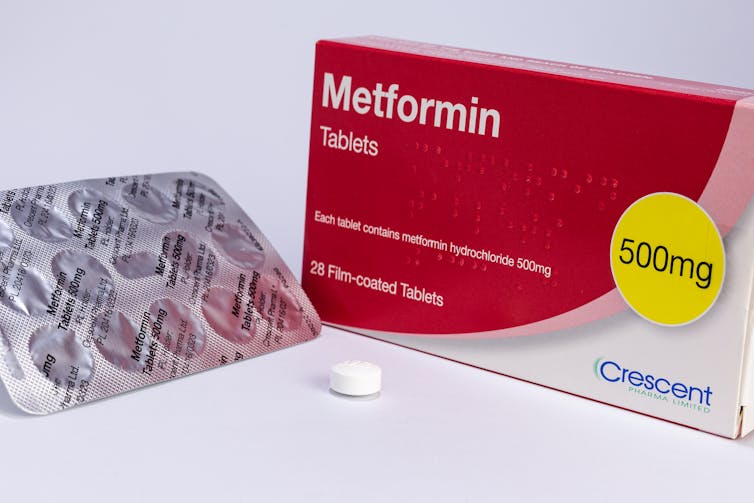While more people may be living longer than ever before, this increase in life expectancy is accompanied by the development of age-related diseases – such as cancer or type 2 diabetes. This is why the a major new parliamentary report has been published in the UK, advocating greater investment in novel treatments that slow ageing, in a bid to bring people five more years of healthy, disease-free life.
The hope is that such treatments would either shorten the period of disease we experience at the end of our life, or extend our total lifespan while keeping the disease period the same.
Ageing is so far known to be caused by nine biological mechanisms, sometimes called the “hallmarks of ageing”. In order to prevent ageing in our tissues, cells, and molecules, we need to be able to slow or prevent these hallmarks of ageing from taking place. While there are numerous treatments currently being investigated, two approaches currently show the most promise in slowing the development of age-related disease.
Repurposed drugs
One area researchers are investigating is looking at whether any medicines already exist which could tackle ageing. This method is advantageous in that billions of pounds have already been spent on testing the safety and efficacy of these drugs and they are already in routine clinical use in humans. Two in particular are promising candidates.
The first is rapamycin, which was originally developed as an immunosupressive. But when taken at low doses, it’s been found to extend the lifespans of mice by around 15%. This is accompanied by the slowing multiple age-related changes, such as tendon stiffening and liver and heart degeneration. In other animal models, it’s been shown to slow the development of Alzheimer’s and Huntington’s disease. In older humans it dramatically improves immune function and vaccination responses.
Rapamycin slows ageing by inhibiting the protein mTOR, which regulates the process of protein production in cells. Inhibiting it allows cells to recycle damaged proteins instead of allowing these to build up. Normally, mTOR allows these damaged protein cells to build up because it requires less energy for cells to continue building more new protein over recycling the old ones. But this buildup of proteins in cells can mean cells don’t function as well as they should. Inhibiting mTOR can enable cells to continue functioning properly.
The second promising medicine is metformin. Originally licensed to treat type 2 diabetes, researchers noticed after decades of use that patients taking it had lower rates of death and illness than those who didn’t – independent of their diabetes.
Data from a range of studies conducted in cells, animals, and humans show that metformin works by suppressing the inflammation caused by senescent cells. A cell enters senescence as a result of stress – such as damage to its DNA. These cells then cease to divide as a defence against becoming cancerous – but the continual inflammation they cause triggers chronic and destructive remodelling of tissue, akin to scarring. As these cells build up in the body’s tissues, they cause or exacerbate diseases and problems of ageing such as cardiovascular disease, cancer, cognitive impairment – even wrinkles.

Metformin also enhances protein recycling, and improves mitochrondrial function. This is central to a cell’s capacity to generate energy and undergo normal metabolism. This is why the drug is slated as a key candidate in clinical trials.
Senolytics and senomodifiers
Another category of drugs currently being developed are senolytics and senomodifiers. These aim to kill or modify the behaviour of senescent cells. This would prevent these cells from accumulating in the body and may slow age-related physical decline.
These drugs, including compounds such as dasatinib, navitoclax, quercetin (found in many fruits and vegetables) and fisetin (found in strawberries), have been found to kill senescent cells.
Senolytic drugs have already shown promise in treating diabetic kidney disease and idiopathic pulmonary fibrosis, both age-related diseases partly caused by senescent cells. There’s also evidence that resveratrol (a compound found in grapes) reverses cell senescence.
Many human cells enter senescence when they lose their telomeres – the protective caps on the ends of chromosomes. Two compounds have so far shown promise in activating the telomere repair enzyme telomerase, preventing telomeric shortening. This would ultimately prevent senescent cells from forming in the first place. One such compound has also been shown to extend heathy lifespan in female mice and is entering clinical trials now to see whether it’s effective at reversing immune system ageing in humans.
Challenges
Despite these developments, there are still many questions left for researchers to answer. For example it’s still not entirely clear whether alterations to the epigenome (which regulate the activity of a gene) cause ageing or are caused by it. If these changes are the cause of ageing, then we currently have little ability to alter them – though ongoing research of this process in animals may give us clues to how the process works in humans.
Evolution itself may also be a barrier to developing therapies. Many therapies have so far only been shown to be effective in animals with very different evolutionary histories to humans. Worse, most of the compounds identified only lengthen lifespan in one sex but not the other. This might be because of the different evolutionary pressures operating on the male and female genomes. If so, then understanding these pressures better may provide us with clues to the development of more effective treatments. But we won’t know for sure until the treatments are in human trials.

